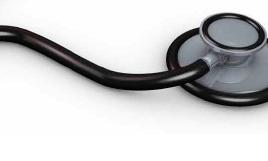
With the principles of lean manufacturing guiding the way, Aesculap, Inc. has dramatically improved its ability to see how its business operations are performing in real time, with an eye toward reducing its reliance on costly and inefficient inventory stockpiles. Keith Regan learns how the provider of surgical kits and related medical equipment has achieved a first milestone on a long journey to excellence.
Any business has to deliver on its promises in order to thrive and survive. For Aesculap, Inc., the quality and on-time promises carry even higher stakes: they can often be a matter of life and death.
Aesculap provides a range of services and products related to surgical procedures and other aspects of healthcare. It specializes in preparing surgical kits that are often used in conjunction with specialized equipment that hospitals, clinics and doctors offices rent from the company.
In the past, Aesculap’s approach to ensuring it always had what was needed when it was needed was to overstock inventory, an approach that created inefficiencies and drove up costs for the Center Valley, Pennsylvania–based firm, according to vice president of operations Steve Burdorf.
“One of thing that stands out when we talk to Aesculap customers is the quality of product and quality of service delivery, and that can’t be compromised,” he says. “If you can’t provide that on the rapid movement of material, the only option is to stock more than you’ll need, to buy inventory and put it in locations so it doesn’t have to be moved around. That becomes a very expensive model when you’re dealing with medical equipment.”
The approach not only had cost drawbacks but threatened quality over the long term as well. For instance, surgical kits begin to lose efficacy if they sit too long. To get to a point where the company is able to meet its customer demands in a real-time environment, Burdorf used the tools of lean and six sigma. In 2009 he brought a lean champion on board to help with the effort, which he says had to begin with the company gaining better visibility into its marketplace.
Of course, the improvements had to come without any loss of service or quality. “We always had a commitment to never missing a surgery,” Burdorf says. “We’ve gone through a major internal change of moving from a push system to a pull system, and as we made those changes our commitment was to not miss a single surgery. Now we’re in a position where we can execute on having material flow much more quickly through the system.”
Aesculap has made a conscious decision not to create a centralized lean department but to use its lean champion to instill the knowledge and principles in existing employees. “We’re using the principles of lean to get buy-in and ownership from everyone so that this is a long-term win,” he adds. “We have made some gains in the short term, but the real prize is those long-term wins.”
One of the challenges Aesculap faces is in its use of the national loaner pool of high-end medical devices and specialty surgical or diagnostic equipment. That equipment needs not only to be moved around as needed but also to have time built in to have it checked by technicians to ensure it’s operating properly. “Being on time and complete is paramount to us maintaining the national competitive advantage we have built for ourselves,” Burdorf states.
Aesculap is currently relying on its ERP system to give it the visibility into performance and customer demands it needs to move products in a timely manner. Investments in an automated sales reporting system are being considered to reduce reliance on manual tracking of machinery and materials.
As with other aspects of the lean push, the company has been careful to make it clear to employees what the final goal is. “Most people think lean means cutting people and staff, and we emphasized from day one that lean is all about cutting the waste. The waste in our case is the wait time, and that’s been our focus all along. Change can be the scariest thing in the world if you aren’t involved or don’t feel part of the process, or it can be one of the greatest things and very exciting when you feel you have control or a say in what is happening. We definitely went through an ebb and flow and highs and lows like any company, but we established trust and focused on small wins along the way, and employees are seeing the results of their own efforts.”
The first major milestone was reached when Aesculap achieved improved flow of equipment in the field, dramatically improved visibility into where equipment is and when and where it will be needed next; this boosted confidence in the sales force and among customers that the new just-in-time approach could work. “We have really worked hard to make this work cross-functionally. It’s not just operations; it’s sales and marketing and getting everyone very involved. We’ve had to change the mindset that the equipment is not your friend if you hold onto it—it’s your friend if you get rid of it so that others can use it. We can’t yet say we’re best in class—that’s a long-term goal—but we’re definitely at the point where we can say that’s where we’re headed and where will be when we hit all our targets.”
The new approach will lay the groundwork for growth the company is expecting to see in coming years as demographic trends and other factors increase demand for its products and services. “With the growth we potentially see, the old model would have become cost-prohibitive to maintain.” Burdorf concludes, “This really is only a milestone at this point. We have a long way to go in our journey.” www.aesculapusa.com













